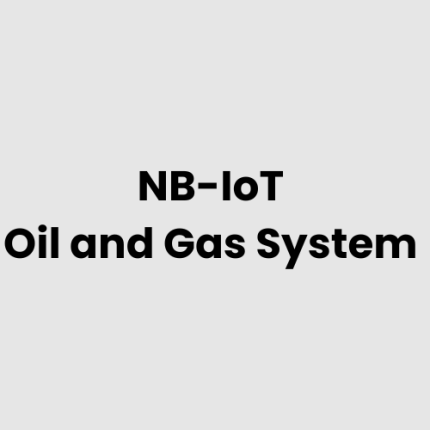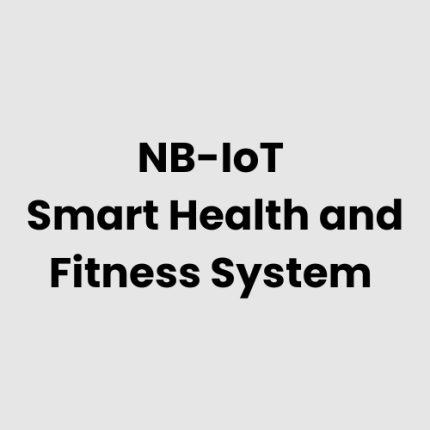Description
NB-IoT Enabled Remote Sensing and Geographic Information Systems (GIS) System
Technical Architecture
The NB-IoT Enabled Remote Sensing and Geographic Information Systems (GIS) System is designed to offer robust and scalable monitoring and data management solutions for remote sensing applications, leveraging narrowband IoT connectivity. The system architecture includes IoT sensors for remote data acquisition, edge devices for preliminary data processing, and a centralized GIS platform for comprehensive data analysis, visualization, and decision-making. The entire system is integrated through a secure and reliable NB-IoT network, ensuring continuous and low-power communication over long distances.
- IoT Sensors: Collect data from environmental, geographical, and physical conditions, including temperature, humidity, soil moisture, and environmental pollution levels.
- Edge Devices: Perform data aggregation, preprocessing, and storage before transmitting the data to the cloud or local server.
- GIS Platform: Integrates, stores, and processes spatial data to visualize geographic patterns, perform spatial analysis, and generate reports for decision-makers.
This architecture ensures that the system is capable of delivering high-quality, accurate, and real-time data with low latency, even in remote and difficult-to-reach locations.
Hardware of the NB-IoT Enabled Remote Sensing and GIS System
The NB-IoT Enabled Remote Sensing and GIS System includes the following hardware components:
- NB-IoT Sensors: Specialized IoT sensors for environmental data collection, including temperature, pressure, humidity, air quality, and soil conditions.
- Edge Devices: Gateways and edge processors for local data aggregation and preprocessing, reducing the load on central servers and improving real-time response.
- Remote Sensing Devices: Satellite-based systems or unmanned aerial vehicles (UAVs) for capturing images, video, or geospatial data.
- GIS Workstations: High-performance computers or servers that run GIS software for spatial data analysis and visualization.
- NB-IoT Connectivity Modules: NB-IoT modules for low-power, wide-area communication between sensors, edge devices, and the GIS platform.
Physical Placement Considerations
When deploying the NB-IoT Enabled Remote Sensing and GIS System, consider the following physical placement factors:
- Sensor Location: Sensors should be placed in strategic positions where they can accurately monitor environmental or geographical parameters. This includes areas like remote agricultural fields, forest monitoring sites, or environmental pollution hotspots.
- Edge Device Placement: Edge devices should be installed close to data sources for efficient aggregation and preprocessing. For example, these may be placed near IoT sensors or satellite ground stations.
- Power Supply: Ensure that all devices are equipped with reliable and sustainable power sources, such as solar panels or battery backups, especially for remote locations.
- Connectivity Coverage: NB-IoT requires sufficient network coverage, especially in rural or remote areas. This should be confirmed prior to deployment to ensure uninterrupted connectivity.
- Environmental Protection: All hardware, especially sensors and edge devices, should be housed in weatherproof enclosures, capable of withstanding harsh conditions (e.g., rain, dust, extreme temperatures).
Hardware Architecture
The hardware architecture of the NB-IoT Enabled Remote Sensing and GIS System integrates multiple devices and networks to facilitate seamless data flow and processing:
- Sensor Network: A collection of various IoT sensors distributed across a geographical area, providing data inputs on environmental and physical conditions.
- Edge Processing Layer: A layer of gateways and edge devices that handle initial data processing and filtering, ensuring that only relevant and essential data is sent to central servers or cloud platforms.
- Data Aggregation Layer: NB-IoT connectivity modules aggregate and transmit data from edge devices to the central server or cloud.
- Central GIS Server: A centralized GIS platform that processes spatial data, performs geographic analysis, and visualizes data for actionable insights.
- User Interface: A web or mobile application for users to interact with the system, view GIS maps, reports, and analyses in real time.
This layered architecture ensures scalability and flexibility, allowing for easy addition of new sensors, devices, or geographic locations.
Deployment Considerations
When deploying the NB-IoT Enabled Remote Sensing and GIS System, several important considerations should be taken into account:
- Network Connectivity: Ensure that the NB-IoT network offers sufficient coverage in the deployment areas. In rural and remote locations, assess available NB-IoT coverage or consider using a hybrid solution with satellite connectivity.
- Power Management: For remote sensing applications, especially in areas with no access to grid power, consider using energy-efficient sensors and solar-powered edge devices.
- Data Security: Implement strong encryption protocols for data transmission and storage to ensure the integrity and confidentiality of the collected data.
- Scalability: Plan the system’s scalability to accommodate future expansions, such as adding more sensors or increasing geographic coverage.
- Maintenance and Monitoring: Establish remote monitoring capabilities to track the health and performance of deployed devices. This will allow for early detection of failures and reduce manual interventions.
List of Relevant Industry Standards and Regulations
- ISO 9001:2015 – Quality management systems
- ISO/IEC 27001:2013 – Information security management
- IEEE 802.15.4 – Wireless personal area networks (WPAN)
- ITU-R M.1457 – Technical specifications for NB-IoT
- W3C – Web standards for GIS data visualization
- GDPR (General Data Protection Regulation) – Data privacy compliance in the EU
- FCC regulations for wireless communications (USA)
- CE Marking – Conformity of equipment with European Union standards
- OGC (Open Geospatial Consortium) Standards for GIS
Local Server Version
For organizations that require in-house data processing or prefer not to use the cloud, a local server version of the NB-IoT Enabled Remote Sensing and GIS System can be deployed. This version includes:
- Local Edge Devices: Devices that collect and preprocess data locally, sending only relevant data to the local server for further analysis.
- Dedicated GIS Servers: High-performance servers capable of processing and visualizing GIS data, running GIS software locally.
- Secure Network Infrastructure: A secure, private network that ensures seamless data transmission between sensors, edge devices, and local servers.
This version offers greater control over data privacy and operational efficiency but requires more investment in hardware and IT infrastructure.
Cloud Integration and Data Management
Cloud integration plays a crucial role in scaling the NB-IoT Enabled Remote Sensing and GIS System. Data collected by IoT sensors and edge devices is securely transmitted to the cloud for centralized storage and advanced processing. Key components of cloud integration include:
- Real-Time Data Streaming: Continuous data transmission from remote devices to the cloud, enabling real-time monitoring and analytics.
- Cloud Databases: Large-scale databases to store collected data, ensuring high availability, scalability, and redundancy.
- Data Analysis and Visualization: Cloud-based GIS platforms offer advanced analysis tools, enabling users to perform spatial analysis and visualize geographic data from any location.
- Automated Updates and Maintenance: Cloud platforms enable remote system updates and patches, reducing maintenance costs and ensuring the system stays up-to-date with the latest software versions.
GAO Case Studies of NB-IoT Enabled Remote Sensing and Geographic Information Systems (GIS) System
USA Case Studies
- San Francisco, California
An urban planning department used NB-IoT-enabled GIS systems to monitor real-time environmental changes, enabling better resource allocation and efficient disaster response strategies. - Miami, Florida
A coastal research facility implemented NB-IoT sensors for shoreline monitoring, providing critical data for predicting erosion patterns and assessing climate change impact. - Denver, Colorado
A government agency deployed NB-IoT-based remote sensing technology to track snowpack levels in mountainous areas, ensuring accurate water resource planning for agriculture. - New York City, New York
A smart city initiative utilized NB-IoT GIS systems for mapping urban infrastructure, improving public service delivery and streamlining traffic management. - Austin, Texas
A renewable energy provider leveraged NB-IoT-enabled GIS tools to optimize wind turbine placement, maximizing energy production efficiency and reducing operational costs. - Seattle, Washington
A forestry management organization integrated NB-IoT systems to track deforestation rates and monitor wildlife habitats, contributing to sustainable ecosystem management. - Phoenix, Arizona
A desert research institute deployed NB-IoT remote sensing technology to monitor soil moisture levels, providing data essential for drought mitigation strategies. - Chicago, Illinois
A municipal water authority used NB-IoT GIS solutions to map and monitor underground pipelines, ensuring timely maintenance and preventing costly leaks. - Boston, Massachusetts
A historical preservation organization employed NB-IoT-enabled GIS systems to monitor structural integrity in heritage sites, safeguarding them from environmental damage. - Atlanta, Georgia
An agricultural research center adopted NB-IoT sensors for crop monitoring, facilitating precision farming practices and reducing resource wastage. - Los Angeles, California
An air quality monitoring initiative integrated NB-IoT GIS platforms to track pollutant dispersion in real time, aiding public health policies. - Houston, Texas
An oil and gas company used NB-IoT-based GIS tools to monitor pipeline networks, ensuring operational safety and regulatory compliance. - Portland, Oregon
An environmental agency deployed NB-IoT-enabled remote sensing to monitor river health and manage aquatic ecosystems effectively. - Las Vegas, Nevada
A tourism-focused smart city project utilized NB-IoT GIS systems to enhance navigation services and analyze foot traffic patterns, optimizing resource allocation. - Salt Lake City, Utah
A mining company adopted NB-IoT sensors for mapping resource deposits and monitoring extraction processes, minimizing environmental impact.
Canada Case Studies
- Toronto, Ontario
A city-wide infrastructure project employed NB-IoT GIS solutions to manage construction sites and track urban development progress in real time. - Vancouver, British Columbia
An environmental organization used NB-IoT-based remote sensing to monitor forest cover changes, supporting conservation initiatives and biodiversity studies.
Navigation Menu for NB-IoT
Navigation Menu for IoT
- LORAWAN
- Wi-Fi HaLow
- Z-WAVE
- BLE & RFID
- NB-IOT
- CELLULAR IOT
- GPS IOT
- IOT SENSORS
- EDGE COMPUTING
- IOT SYSTEMS
Our products are in stock and can be shipped anywhere in the continental U.S. or Canada from our local warehouse. For any further information, please fill out this form or email us.
We are actively looking for partners who are like us located in the U.S. and Canada. For more information on partnering with GAO, please visit Partner with GAO Tek Inc. It lists various ways to partner with GAO, such as OEM Partnerships, Technology Integration, Distribution and Reselling Opportunities, Presenting at the Leading Event Tek Summit, Joint R&D Projects, Training and Consulting Services, Industry-Specific Collaborations, Research and Academic Partnerships.



